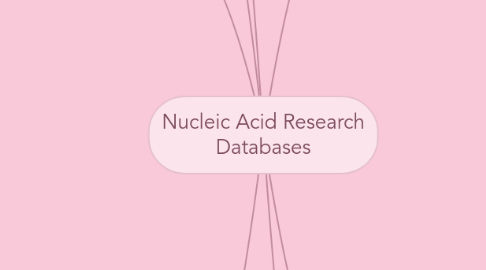
1. Important databases need to be grouped
1.1. Increasing of the publish papers.
1.2. To make the new and updated informations more organized and systematic based on their specific areas.
1.3. Easier to browse and search
1.4. Every databases have their own charateristics to sort of.
1.5. To help the users reach the databases that suit to their research needs
2. Reasons some databases are no longer in the databases and dropped from it.
2.1. Outdated-may be replaced by new updated database
2.2. Database unresponsive or lagged -results from overload data
2.3. Security vulnerability -Malware infection or data corruption
2.4. Requires users to pay in order to access the database information
2.5. Irrelevance- unclarity topic or search results
3. Reason databases are created and shared.
3.1. Database are center of information thus it needs to be shared for the knowledge to be spread
3.2. Conveniet form of data searching- Meta database
3.3. Database cater large amount of data or information within a single software
3.4. For better understanding
3.5. Database provide invalueable resources for development of research
4. The 2016 database issue of Nucleic Acids Research and an updated molecular biology database collection
4.1. Nucleotide Sequence Databases
4.1.1. JuncDB- exon-exon junction
4.1.2. BIGNAsim - DNA dynamics based on molecular dynamics simulations
4.1.3. CEGA - non-coding sequences, highly conserved within various group
4.2. Protein sequence databases
4.2.1. Pfam - sequence data
4.2.2. PDBe - protein structure
4.2.3. UET- predicted protein functional sites
4.2.4. Gene3D- function predictions to proteomes
4.2.5. Fun Tree- evolution of protein function in superfamilies
4.2.6. PDBFlex- statistics of animation between pairs of homologous structure in PDB
4.3. Metabolic and Signaling Pathways
4.3.1. KEGG, MetaCyc, Reactome, WikiPathways, ECMDB, BiGG Models and MNXref/MetaNetX metabolomics data
4.4. Viruses, Bacteria, Protozoa and Fungi
4.4.1. BacWGST - identify the bacterial strains in samples isolated from infection
4.4.2. MG-RAST, EBI Metagenomics, probeBASE
4.4.3. Ensembl Genomes and Bacterial Diversity (BacDive) - organizal genome diversity
4.5. Genomes of Human and Model Organisms
4.5.1. DMDD- collects phenotypic data of mouse mutant embryos
4.5.2. dbMAE - provides manually curated data on allele-specific expression of autosomal genes
4.6. Human Diseases and Drugs
4.6.1. HaploReg -human genetic variation
4.6.2. ClinVar, GWASdb
4.6.3. DIDA - collects data of diseases
4.7. Plants databases
4.7.1. Information Commons for Rice (IC4R)
4.7.2. Plant Promoter Analysis Navigator
4.7.3. a compendium of Chinese databases - aspects of rice research
4.8. mitochondrial and chemical compounds
4.8.1. MitoAge - mitochondrial DNA properties from various organisms
4.8.2. MitoCarta and MitoMiner - mitochondrial proteins
5. Organisation of databases & its major grouping
5.1. Organisation of databases
5.1.1. DNA Data Bank of Japan (National Institute of Genetics)
5.1.2. EMBL (European Bioinformatics Institute)
5.1.3. GenBank (National Center for Biotechnology Information)
5.2. nucleic acid sequence and structure databases
5.3. DNA sequence database
5.4. protein sequence databases
5.4.1. Pfam
5.4.2. PANTHER
5.4.3. eggNOG
5.4.4. GPCRdb
5.4.5. Transporter Classification database (TCDB)
5.4.6. Nucleotide Binding Database (NBDB) of nucleotide-binding motifs
5.4.7. Universal Evolutionary Trace (UET) database
5.4.8. Eukaryotic Linear Motif (ELM) database
5.5. structure databases
5.5.1. PDBe - protein folding, flexibility and dynamics
5.5.2. Start2Fold - collates experimental hydrogen/deuterium exchange data
5.5.3. CATH - structural domain classifications to shed light on protein function
5.5.4. Gene3D - assigning domain annotations and associated function predictions to proteomes
5.5.5. FunTree - attempting to better understand the evolution of protein function in superfamiles.
5.6. Genomic Database
5.7. metabolic and signalling pathways
5.7.1. KEGG
5.7.2. MetaCyc
5.7.3. Reactome
5.7.4. WikiPathways
5.7.5. Escherichia coli metabolism database (ECMDB)
5.8. genomes of human and model organisms
5.8.1. Ensembl Genomes and Bacterial Diversity (BacDive) databases
5.8.2. UCSC Genome Browser
5.9. human genes and diseases
5.9.1. ClinVar, GWASdb, HaploReg and others are dedicated to human genetic variation as it relates to disease, primarily cancer, and various aspects of drug research
5.9.2. Database of Digenic Diseases (DIDA), which collects data on such diseases as Bardet-Biedl and Kallmann syndromes that are caused by single nucleotide variants or small indels in specific pairs of genes
5.10. Microarray Data and other gene expression database
5.11. proteomic resources
5.11.1. Proteomics Identifications Database (PRIDE) - containing protein and peptide identifications.
5.11.2. sORF - a collection of small ORFs identified by ribosome profiling
5.11.3. post-translational modifications (dbPTM)
5.12. Other molecular biology database
5.13. Organelle database
5.13.1. MitoCarta and MitoMiner - databases of mitochondrial proteins
5.13.2. MitoAge - a database of mitochondrial DNA properties from various organisms
5.14. plant databases
5.14.1. Plant Promoter Analysis Navigator
5.14.2. Information Commons for Rice (IC4R)
5.14.3. a compendium of Chinese databases - aspects of rice research
5.15. cell biology
5.15.1. Ensembl Genomes and Bacterial Diversity(BacDive)
5.15.2. MG-RAST, EBI Metagenomics, probeBASE, Human Pan-Microbe Communities database
5.15.3. BacWGST
5.16. Immunological database
6. Numbers available
6.1. 2016 Database Issue of Nucleic Acids Research
6.1.1. 62 new online databases
6.1.2. 95 update articles on databases that have been previously featured in the NAR Database Issue
6.1.3. 17 previously have been discuss
6.2. NAR website- freely available online
6.3. Molecular Biology Databases Collection updates with:
6.3.1. addition 88 new resources
6.3.2. removal 23 obssolete website
6.3.3. current list 1685 databases
6.4. 178 articles
6.4.1. 62 new created databases
6.4.2. 95 provide updates on databases
6.4.3. 17 update databases have been published in other journal
6.5. NAR online
6.5.1. 62 new databases
6.5.2. 15 databases have been discuss
6.5.3. 15 categories
6.5.3.1. 41 subcategories
